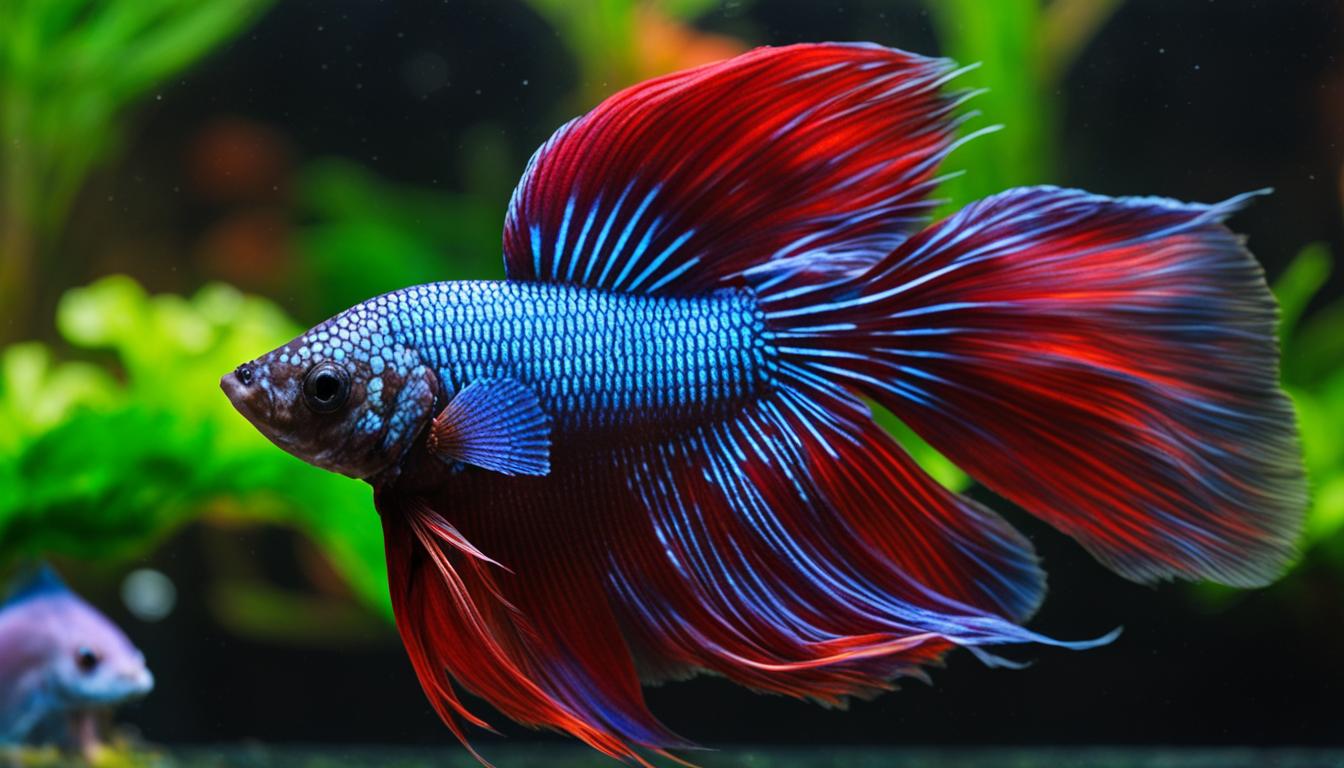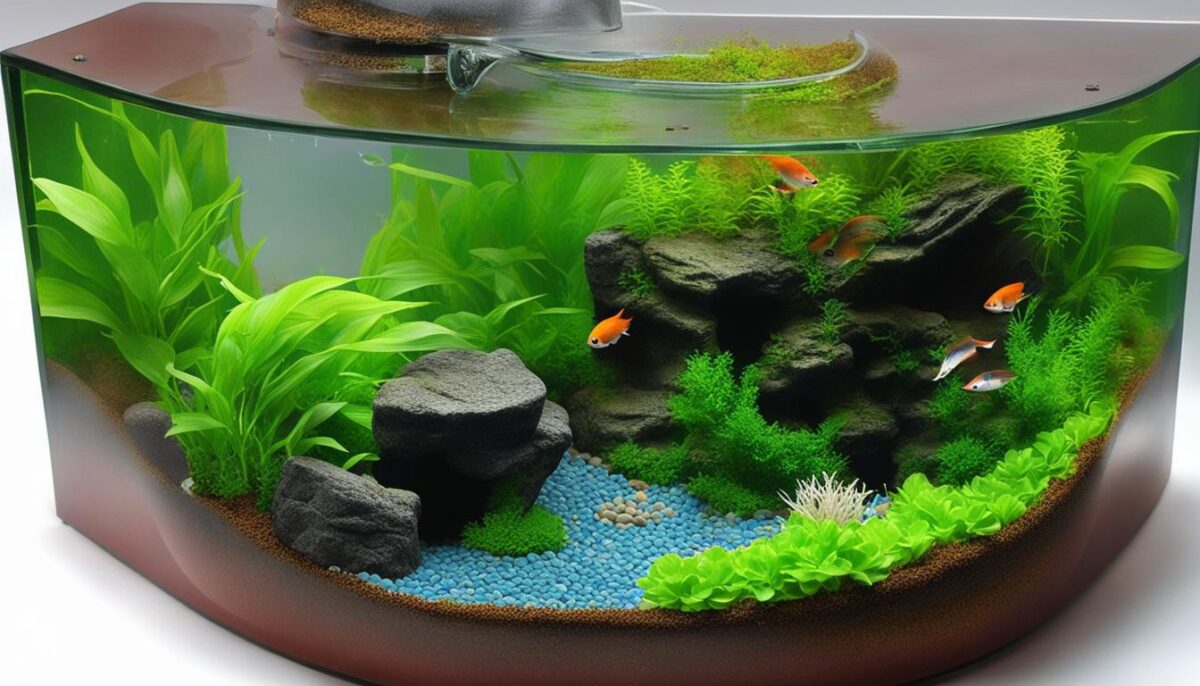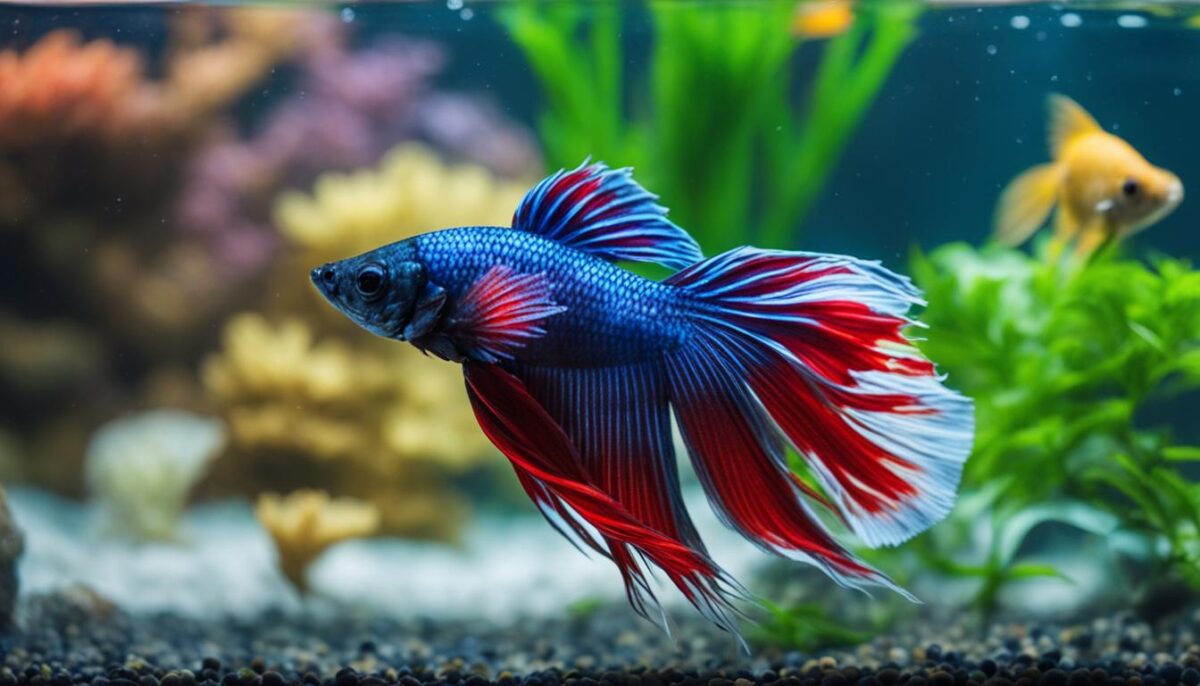Breeding betta fish can be a rewarding experience, but it requires careful preparation and attention to detail. In this comprehensive guide, we will walk you through the process of breeding betta fish step by step, ensuring that you have all the information you need to successfully raise healthy bettas in your own home.
Key Takeaways:
- Breeding betta fish requires careful selection of healthy bettas with desirable characteristics
- Conditioning the breeding pair through proper diet and water conditions is crucial for successful breeding
- Setting up the breeding tank with suitable equipment and water parameters is essential for the bettas’ well-being
- Proper care for the fry, including feeding and tank maintenance, is vital for their healthy development
- Patience and attentiveness are key throughout the breeding process to achieve desired results
Selecting and Conditioning the Pair
The first step in breeding betta fish is to select a healthy pair of bettas with desirable physical characteristics. Choosing the right bettas is crucial to ensure the quality of the offspring.
When selecting bettas for breeding, it is important to consider their age, finnage, coloration, and behavior. Ideally, you should choose bettas that are between two and six months old.
You can assess the finnage of bettas by looking at the length, shape, and symmetry of their fins. Vibrant coloration is also a desirable trait as it indicates good health and genetic quality. Active and robust behavior is a positive sign that the bettas are in good physical condition.
Table: Desirable Characteristics for Selecting Betta Fish Breeding Pair
| Characteristic | Description |
|---|---|
| Age | Between 2 and 6 months |
| Finnage | Long, symmetrical fins |
| Coloration | Vibrant, healthy-looking colors |
| Behavior | Active and robust |
Once you have selected your breeding pair, the next step is to condition them for breeding. Conditioning betta fish involves providing them with a high-protein diet rich in live foods and maintaining optimal water conditions. This process typically lasts for two to four weeks to ensure that the fish are in peak physical condition for breeding.
During the conditioning period, you can feed your bettas live foods such as brine shrimp, daphnia, and bloodworms to enhance their nutritional intake. These live foods provide essential nutrients and help stimulate the breeding instincts of the bettas.
It is also important to maintain optimal water conditions in the bettas’ tanks. The water temperature should be kept between 78 and 82°F (25 to 28°C), and regular water changes should be performed to keep the water clean and fresh.
Setting Up the Breeding Tank
Now that you have selected and conditioned your betta fish pair, it’s time to set up the breeding tank. Creating the right environment is crucial for successful betta fish breeding. Here’s what you’ll need to do:
1. Tank Size
A 10-gallon aquarium is recommended for your breeding tank. This size provides enough space for the fish and their fry to thrive.
2. Filtration and Heating
Ensure your tank has a gentle filtration system to maintain water quality. Additionally, use a heater to keep the water temperature between 80-86°F (27-30°C) – the optimal range for betta fish breeding.
3. Creating a Bubble Nest
Male bettas build bubble nests to protect the eggs. Provide plenty of floating plants or other objects like styrofoam cups or leaves for the male to construct his nest.
4. Water Conditions
Use soft, mildly acidic water with a pH range of 6.5-7.5. Adding tannins to the water can mimic the bettas’ natural environment and promote breeding behavior. You can obtain tannins by placing dried Indian Almond Leaves or using commercially available tannin extracts.
5. Substrate and Tank Condition
The tank should be free of gravel or substrate as it can trap and damage the delicate eggs. Keeping the tank well-established and clean is crucial for the successful development of the fry.
Now that you know how to set up your breeding tank, let’s move on to the next section to learn about caring for the fry that hatch from the eggs.
Caring for the Fry
Once the betta fish have spawned and the fry have hatched, it is important to provide proper care for the fry. They are delicate and require specific attention to ensure their healthy development. Here are some essential tips for betta fish fry care and raising betta fish fry:
- Feeding: Betta fish fry are unable to eat dry foods until they are older. To nourish them during their early stages, feed them small live foods such as infusoria, brine shrimp nauplii, microworms, and vinegar eels. These tiny organisms provide the necessary nutrients for their growth and development.
- Individual Containers: Keep the betta fish fry in individual containers to prevent aggression among the males. This also ensures that each fry receives adequate space and food. Use small, appropriately sized containers with clean water and provide a hiding place, such as a mini plant or small PVC pipe, to reduce stress.
- Water Quality: Regular water changes are crucial for maintaining optimal water quality for the betta fish fry. Perform partial water changes every few days to remove waste and maintain clean water. This helps prevent the buildup of harmful substances that can stunt their growth or cause health issues.
- Gradual Transition: As the betta fish fry grow older and become more resilient, they can be transitioned to larger tanks. Gradually introduce them to tanks with appropriate filtration and heating systems. It is a good idea to acclimate them to the new environment by slowly adjusting water parameters over a period of time.
- Introducing Dry Food: When the betta fish fry are large enough, you can start introducing them to dry betta fish food in addition to the live foods. Start with crushed or powdered flakes and pellets, gradually increasing the size of the food as the fry grow. This helps them develop a well-rounded diet.
By following these tips for betta fish fry care and raising betta fish fry, you can ensure the health and well-being of your betta fry. Remember to monitor their growth, provide clean water, and offer a varied diet to promote their healthy development into vibrant adult bettas.
Conclusion
Breeding betta fish can be a rewarding but challenging endeavor. It requires careful selection of bettas, conditioning them for breeding, setting up a suitable breeding tank, and providing proper care for the fry. By following the steps outlined in this comprehensive guide, you can increase your chances of successfully breeding and raising healthy bettas.
Remember to be patient and attentive throughout the process, as it may take time and effort to achieve the desired results. With proper care and attention, you can enjoy the joy of breeding and raising vibrant bettas in your own home.
FAQ
How do I select betta fish for breeding?
When selecting betta fish for breeding, it is important to choose fish that are between two and six months old and have strong finnage, vibrant coloration, and active behavior. These physical characteristics indicate good overall health and breeding potential.
How long should I condition betta fish for breeding?
Betta fish should be conditioned for breeding for a period of two to four weeks. During this time, they should be provided with a high-protein diet rich in live foods and maintained in optimal water conditions to ensure they are in peak physical condition for breeding.
What is the recommended tank setup for breeding betta fish?
For breeding betta fish, a 10-gallon tank is recommended. The tank should have gentle filtration, a heater to maintain the water temperature at 80-86°F, and plenty of floating plants or other objects for the male to build his bubble nest. Soft, mildly acidic water with a pH of 6.5-7.5 should be used, and tannins can be added to mimic their natural environment.
How should I care for betta fish fry?
Betta fish fry should be fed small live foods such as infusoria, brine shrimp nauplii, microworms, and vinegar eels, as they are not able to eat dry foods until they are older. They should be kept in individual containers to prevent aggression among the males, and regular water changes should be performed to maintain water quality. As they grow older, the fry can be transitioned to larger tanks and introduced to dry betta fish food gradually.


